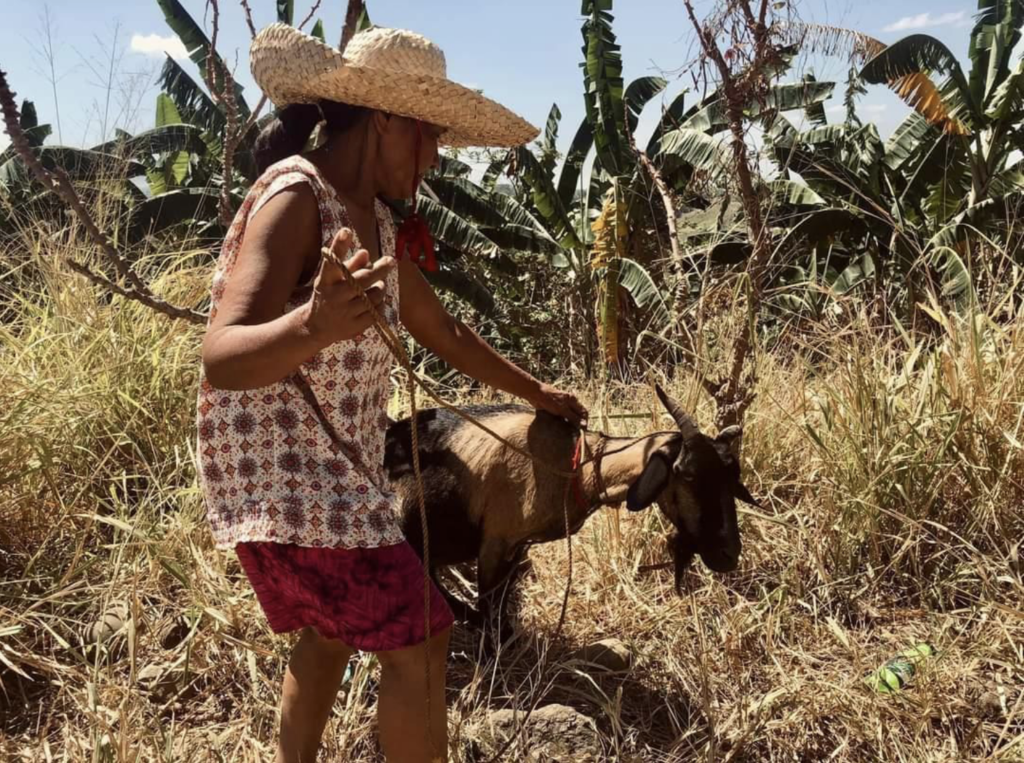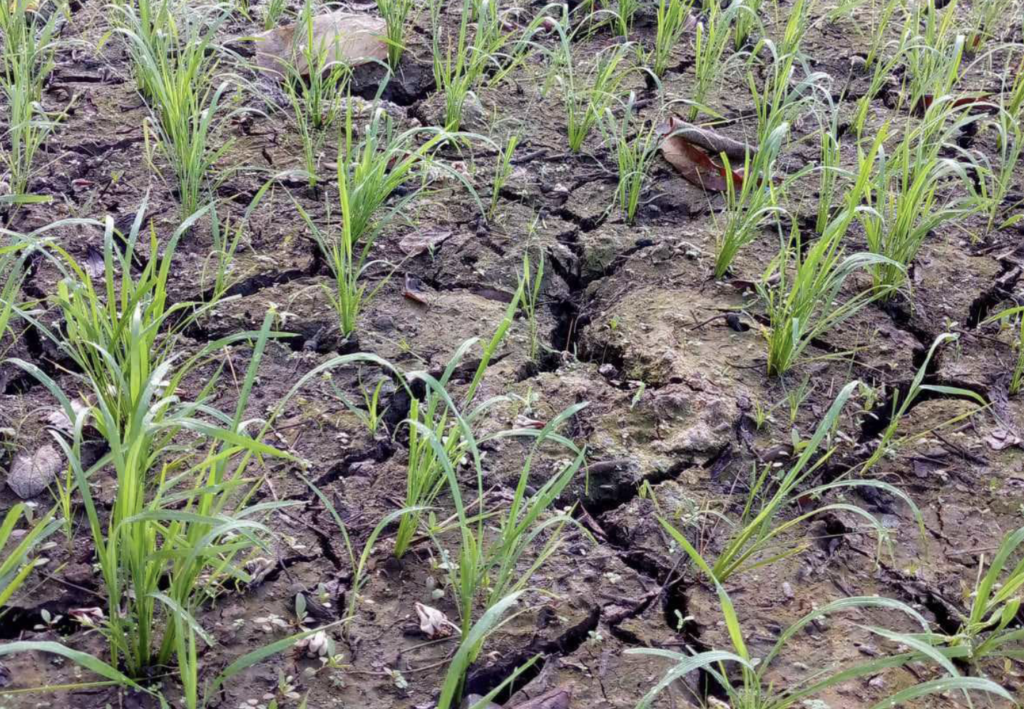The 2023-2024 El Niño is one of the strongest in history, making 2023 the hottest year on record the planet has ever experienced. While El Niño is a natural and cyclical weather pattern typically occurring every two to seven years, its impacts have been aggravated by the worsening climate crisis caused by unbridled fossil fuel production and use and wanton plunder of natural resources led by the world’s biggest transnational corporations.
El Niño severely affected countries in the Asia-Pacific region, with rural communities suffering the brunt of impacts.
In October 2023, Indonesia’s eastern Papua region and Sumatra island faced forest fires, water shortages, and agricultural damage; Bali declared a two-week emergency alert status due to drought. Significant drought concerns also arose in Papua New Guinea, while dry conditions in parts of the Northern Pacific resulted in severe water shortages in the Federated States of Micronesia and Marshall Islands.
Since November 2023, almost one-third of Timor-Leste’s population experienced severe food insecurity caused by El Niño conditions—a situation that is expected to persist until September 2024.
Meanwhile, Mongolia experienced a severe winter season locally known as dzud. In May, it saw its highest recorded snowfall in the last 49 years, affecting 90 per cent of the country and killing more than 5.9 million livestock.
In Southeast Asia, below-average rainfall was recorded in the first quarter of 2024 across Myanmar, Thailand, Cambodia, Lao PDR, Viet Nam, and the Philippines.
The impacts of El Niño on Filipino farmers have been particularly dire. As of June 6, the total amount of crop losses due to the scorching heat has reached USD 168.79 million, mostly in rice and corn. The Department of Agriculture said that the dry spell has affected the livelihoods of 183,455 farmers and fisherfolk.
The Philippines has remained the most disaster-risk country in the world for the past 13 years. It has consistently held the top spot of the World Risk Index, which measures countries’ exposure to natural disasters and societal capacity to respond.
With 81% of the country’s villages categorized as rural areas, the Philippines is mainly an agricultural country whose majority of the population engages in farming. However, farmers are one of the poorest groups in the country. Land reform programs have failed to deliver its promise of land distribution to the farmers. Moreover, the agriculture sector’s contribution to the economy has been falling in recent years due to the decades-long neoliberal push to open up the sector to private interests.
El Niño impacts on the Philippines
In the face of inadequate government aid to farmers affected by El Niño, PAN Asia Pacific joined a relief mission led by the Consortium for People’s Development Disaster Response (CPDDR) in Isabela, the second largest rice granary in the Philippines and a province considered high-risk of El Niño impacts by the United Nations Food and Agriculture Organization.
Dried-up irrigation systems and other water sources have left visible cracks in the field.
According to farmers interviewed by PANAP, the dry fields make land preparation for the next planting cycle doubly difficult. Many of them have been unable to grow crops since December last year, while others were only able to farm until February 2024.

Farm animals have also suffered from severe heat. Hens and geese have died en masse, while many carabaos and cows have grown weak and sickly.
In the town of Alicia, some farmlands were not as affected by drought because of better irrigation systems. However, for farmworkers, this does not spell any relief. They had to avoid working at the height of the scorching heat. “During this El Niño season, we only work for a limited time in the field because of the extreme heat,” Regelio Gameng, a farmworker, relates. Diagnosed with encephalitis, an inflammation of active tissues of the brain, working in extreme heat is especially difficult for him.
Farmworkers end up with even lower wages because of reduced work hours and unfinished tasks, This was evident in a piece of land the local residents call ‘retaso.’ One family of farmworkers told PANAP how they lost ownership of their lands in the early 2000s in a legal battle. Without land, they had to depend on work agreements with landlords or rich farmers.
Farmworkers in Isabela usually work in groups or production units, locally known as cabecillas. One work cycle, which usually spans two weeks, allows each farmworker to earn Php6,176 (USD 176). For two work cycles a year (planting and harvesting), their annual income is Php12,352 (USD 211). Usually, at the end of the year they will enter arrangements with landowners called sagibo wherein in exchange for harvesting rice, they will receive half of the total harvested rice. There was no sagibo this season due to El Niño.
“Most of us who live here are poor. Our wages cannot cover all our needs. There are very few well-off people in our community, including our village captain who is a landowner,” one of the farmworkers who requested anonymity said. He works as a construction worker during off-season.
As a result of their worsening economic situation, a significant number of the wives in the community have opted to work overseas. Regelio’s wife works as a domestic helper in Qatar, leaving him to tend to his health on his own while juggling farm work and family responsibilities.
Sugar farmworkers in the nearby town, Sta. Maria, share similar stories of destitution. During planting season, they receive daily wages of Php350 (USD 6) for working in sugarcane fields owned by the town mayor. However, the crops have dried up and pests have ravaged what is left of them. At this point, they have no work. Like the rice farmworkers in Alicia, they look for alternative sources of income.
Field research conducted by the women peasant group AMIHAN meanwhile revealed the situation of farmers in the Bicol region.
A farmer in Polangui, Albay, who asked to be unnamed, harvested only 3 sacks of unmilled rice from his half hectare land. Under normal circumstances, yields can reach up to as much as 50 sacks. The nearby river, the farm’s only source of water, has dried up and no government aid has arrived.
Unfunded irrigation systems mean that farmers must shoulder the cost of rented water pumps, which costs as much as Php500 (USD 9) per use, excluding expenses for gasoline. Most farmers cannot afford such added costs of production, on top of huge land preparation costs due to large cracks on dried-up land. Additionally, rice farmers complained that the heat stunted their grains, further reducing their already low harvest.

For women farmers, the drought meant additional burden as they are obliged to work odd jobs to feed their families or to pay for debts. Vegetable farms taken care of by women farmers were also severely affected–bitter gourd, string beans, and okra plants dried up. Now, they turn to caregiving of bedridden patients and babysitting for alternative sources of income.
Neoliberal agricultural policies
The severity of the impacts of El Niño and the failure of the government to effectively reflects deep-rooted and systematic state abandonment of agriculture in line with the neoliberal economic paradigm.
In the past decades, the government has implemented liberalization policies that have resulted in the maldevelopment of the agricultural sector. The Agriculture and Fisheries Modernization Act (AFMA), World Trade Organization – Agreement on Agriculture (WTO AoA), and more recently, the Regional Comprehensive Economic Partnership (RCEP) has removed state subsidies, promoted the participation of the private sector and foreign monopoly, and encouraged trade liberalization. Farmers are left with privatized irrigation services and a market filled with imported agricultural products they cannot compete with.
Research by Peasant Movement of the Philippines (Kilusang Magbubukid ng Pilipinas or KMP) reveals that despite a five-fold increase in the national budget for irrigation services from 2012 to 2018, areas where irrigation systems are installed expanded only by 22%. Irrigated farmlands are 66% of the total land area of the country. However, working irrigation systems are estimated to be much lower, with farmers reporting many unfinished or abandoned government irrigation projects.
Meanwhile, the country’s large dams are used for profit-oriented hydroelectric power generation. The commercial use of dams for privatized water distribution comes at the expense of irrigation services of farmlands. Government data shows a 6% decrease of water use for irrigation, while industry water use saw an increase of 5% in the span of a decade (2010-2022).
People’s responses
The climate crisis and its heightened impacts has also heightened the solidarity among the ranks of farmers and land advocates, who have relied on collective action to respond to the urgent needs for recovery, while amplifying their calls for genuine social change.

Organisations of farmers and farmworkers such as KMP and Unyon ng Manggagawa sa Agrikultura have relief operations to affected farming communities, with the support of youth advocates and ecumenical groups. PANAP has provided support in generating donations for these relief drives; and promoted agroecology as a climate solution together with local partners. MASIPAG shares farmer-bred drought tolerant rice seed varieties. The Climate Change Network for Community-based Initiatives established the Bicol Farmers School to educate farmers on pesticide-free farming for climate resilience.
Farmers and farmworkers are calling for just compensation and production subsidies for El Niño-affected farmers, particularly a Php45,000 (USD 767) subsidy that can cover the costs of land preparation for the next planting cycle.
“The farmers’ call for aid and compensation for the impacts of El Niño is alongside the call for genuine land reform. The liberalization policies of the Marcos administration have exacerbated the impacts of the climate crisis, negatively affecting the country’s productivity and rice self-sufficiency. While we call for relief, we also call for a halt to deforestation, mining, reclamation and other projects that not only worsen the environmental crisis, but also causes the further displacement and marginalization of farmers. What we want is free land distribution to the tillers, along with support for services and production,” said Cathy Estavillo, chairperson of AMIHAN.
Indeed, only with the dismantling of land monopolies and foreign monopoly control over food systems can the Philippines build a strong local agriculture sector that truly responds to the aspirations of the people. Only thoroughgoing economic and social reforms will be able to uplift rural peoples from abject poverty and ease their vulnerability to the impacts of the deepening climate crisis. ###








Discussion about this post